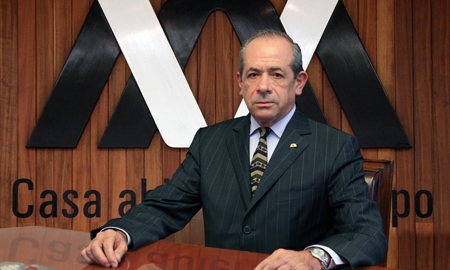Founded on the values of improving Mexico’s higher education in 1974, the
Metropolitan Autonomous University (
UAM) has become one of the most modern and highest quality universities in the country. With its extensive offering of 75 undergraduate programs and 62 postgraduate programs, UAM is constantly striving for improvement to offer its students the most contemporary education possible.
“The UAM is, without a doubt, the second most important university in the country,” says Dr. Enrique Fernandez Fassnacht, Rector of UAM, adding that the university is only just behind the much larger National Autonomous University of Mexico (UNAM). “There are a number of educational programs in which UAM is in first place on a national level, so I think we have a lot of things to be proud of, from both our past and present.”
Following the Mexican student movements of 1968, then-president Luis Echeverria mandated the creation of UAM, after the National Association of Universities and Institutes of Higher Education called for the establishment of a modern university. This new institution helped meet the demand of an ever-increasing number of young Mexicans who wanted to go to college, while also creating a public, urban place where innovation could thrive.
Located in different points throughout the metropolitan region of Mexico City, UAM is separated into five different academic locations: Lerma, Azcapotzalco, Cuajimalpa, Iztapalapa, and Xochimilco.
This purposeful decentralization of the campuses is to allow each area to develop independently and organically. Whereas the science investigation takes place in the Iztapalapa unit, civil engineering and architecture is located in Azcapotzalco, and health in Xochimilco. Dr. Fernandez explains that its departmental system is similar to that used by the finest universities in the United States, with each department doing research in their field of expertise.
Within these disciplines, UAM has 920 professors in the national system of researchers. Dr. Fernandez explains that one significant difference between UAM and UNAM is the relationship between the faculty doing its research and the student body.
“UAM has a much closer relationship [than UNAM] between the researchers and the undergraduates,” says Dr. Fernandez, indicating that it is a natural result of students working closely with professors within their specific departments, and that it is aligned with the most important function of the university which is to educate the students.
This progressive layout of UAM highlights an institution that is flexible and open to modernization – the university’s motto is: “House open to time”. Although Dr. Fernandez says there is still work to be done and improvements to be made, such as the coverage of Mexican students educated and increased contact with international universities, UAM is always looking toward the future because, as the rector explains: “We aspire, of course, to be the best university in Mexico.”

0 COMMENTS